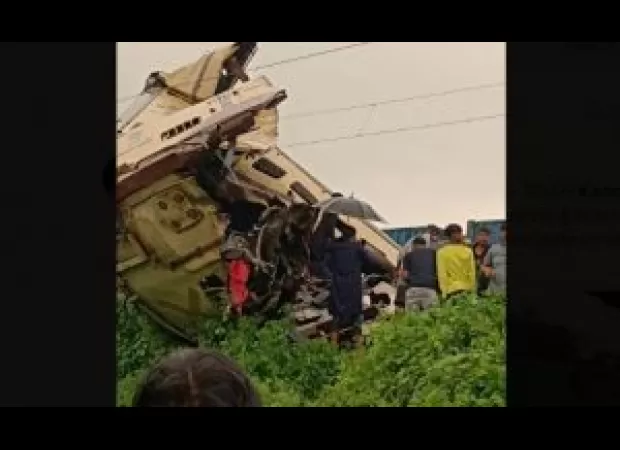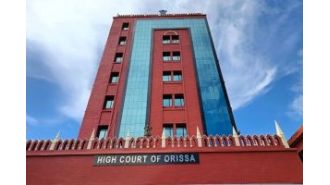The Railway Board states that the Kanchanjunga Express accident occurred due to the goods train driver breaking speed restrictions.
New Delhi: Initial investigation into Kanchanjunga Express crash reveals that the goods train was overspeeding due to a faulty signal system and collided with a stationary passenger train, causing injuries to nine people.

The Railway Board released a statement today regarding the Kanchanjunga Express accident that occurred in West Bengal. According to their initial findings, it appears that the goods train involved in the accident was travelling at an excessive speed and disregarded the speed restrictions in place due to a faulty automatic signalling system. As a result, the goods train collided with the stationary passenger train, causing the death of seven passengers and two railway employees, as well as injuring 41 others.
The incident took place on the Ranipatra Railway Station - Chattar Hat Junction stretch in Darjeeling district this morning. The board clarified that the driver of the goods train had been given authorization to pass through all red signals between RNI and CAT due to the malfunctioning automatic signalling system. However, they also stated that the train's speed was above the permissible limit for such a situation.
The board clarified that the goods train's driver was travelling at an excessive speed, causing the collision with the Kanchanjunga Express. This response came after reports emerged that the driver, who unfortunately lost his life in the accident, had been given a written authority called TA 912 by the station master of Ranipatra. This authority granted permission to the driver to disregard all red signals in the section, but the Railway Board did not disclose the actual speed of the goods train.
In contrast, the driver of the Kanchanjunga Express followed all the required procedures when encountering a defect in the automatic signalling system. They stopped at all red signals for one minute and proceeded at a speed of 10 kmph. However, the goods train's driver did not follow these norms and hit the stationary passenger train from behind.
A railway official explained that according to the norms, the TA 912 authority letter permits the driver to proceed with caution at a speed not exceeding 15 kmph in good visibility and 10 kmph in low visibility. The official added that the driver must stop the train for one minute during the day and two minutes at night when encountering a red signal, and then continue at the restricted speed.
The authority letter, TA 912, explicitly states that the automatic signalling system has failed and authorizes the goods train's driver to pass through all signals between RNI and CAT, regardless of their aspect. Moreover, the letter mentions that there are a total of nine signals in this section. This information is crucial in understanding the events that led to the accident.
Sources within the railway department reported that the automatic signalling system between RNI and CAT had been malfunctioning since 5:50 am on the day of the accident. The 13174 train departed from Rangapani station at 8:27 am and stopped between RNI and CAT for reasons unknown. Another railway official stated that when the automatic signalling system fails, the station master issues the TA 912 authority letter, allowing the train to proceed through all red signals due to the defect.
The source added that around the same time, a goods train, GFCJ, departed from Rangapani at 8:42 am and collided with the Kanchanjunga Express at 8:55 am. This collision resulted in the derailment of the guard's coach, two parcel coaches, and a general seating coach. Railway Board Chairperson Jaya Varma Sinha spoke to reporters soon after the accident and confirmed that the collision occurred because the goods train ignored the signal and hit the Kanchanjunga Express, which was en route from Agartala to Sealdah.
However, the Indian Railway Loco Runningmen Organisation raised questions about the Railway Board's statement regarding the driver violating the red signal. The organisation's working president, Sanjay Pandhi, stated that it is incorrect to say that the driver must stop at a red signal for one minute and then proceed at a restricted speed after receiving the TA 912 letter. Pandhi clarified that once the driver receives this authority, they can proceed at any speed since the letter indicates that the line is clear. He also mentioned that the authority letter does not mention any speed restrictions.
20 Views






